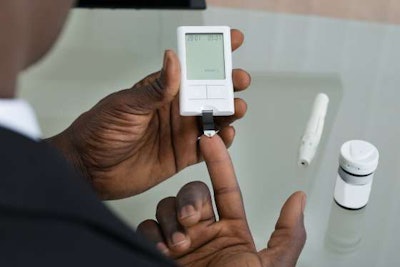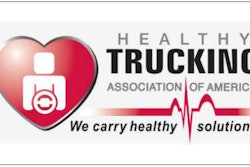

Because long-haul driving is largely sedentary, truckers have a higher incidence of weak circulation and other heart issues, as well as obesity and diabetes. Recognizing these symptoms early and discussing them with your doctor can help prevent them from worsening.
Obesity
A person is considered obese when body mass index (BMI) is 30 or higher, according to the Mayo Clinic. To calculate your BMI, you can search online for a free BMI calculator. Plug in your weight and height, and it computes your BMI. A reading of 25-29.9 is considered overweight, 30-34.9 is considered Obese (Class I) and 35-39.9 is Obese (Class II). A BMI of 40 or higher is considered Extreme Obesity (Class III). Obesity can lead to poor circulation and increased strain on blood vessels or more serious problems: Type 2 diabetes, heart disease, stroke, breathing disorders and more.
Diabetes
The most common form of diabetes is Type 2, in which the body is not using insulin properly. In addition to numbness or tingling in your legs or feet while driving, other symptoms include excessive thirst, frequent urination, dry mouth and itchy skin. Slow-healing wounds and yeast infections are associated with diabetes. Diabetes can lead to high blood pressure, stroke, blurry vision or vision loss.
Heart disease
Heart disease covers various conditions that affect your heart’s ability to function properly. High blood pressure, which is widespread in the trucking industry, is a risk factor for heart disease because of the strain it puts on the vascular system. Symptoms for heart disease include racing heartbeat, chest pain or tightness, shortness of breath, pain or numbness in the legs or arms, tiring quickly during exercise or activity, frequent breathlessness and swelling of the legs and feet, among others.
Treatment and prevention
Risk for heart disease and diabetes increases as weight increases. If you’re obese or moving in that direction, partner with your doctor for a plan to get your weight under control. No single diet or lifestyle change will work for everyone, so it’s important to get personalized recommendations from your physician. If you’ve been experiencing symptoms of diabetes or heart disease, visit your doctor for a clear diagnosis. These conditions often can be managed with medication and diet, but left untreated, serious long-term issues can result.
For immediate help with improving circulation to your feet while driving, lift your foot up and down at the ankle to increase blood flow. For feet made cold by diabetes or a similar condition, avoid drastic measures such as putting your feet too close to a heater. Burns could result since these conditions alter the skin’s perception of temperature.
If you feel you have poor circulation or any relation conditions, be sure to see your health care provider.










